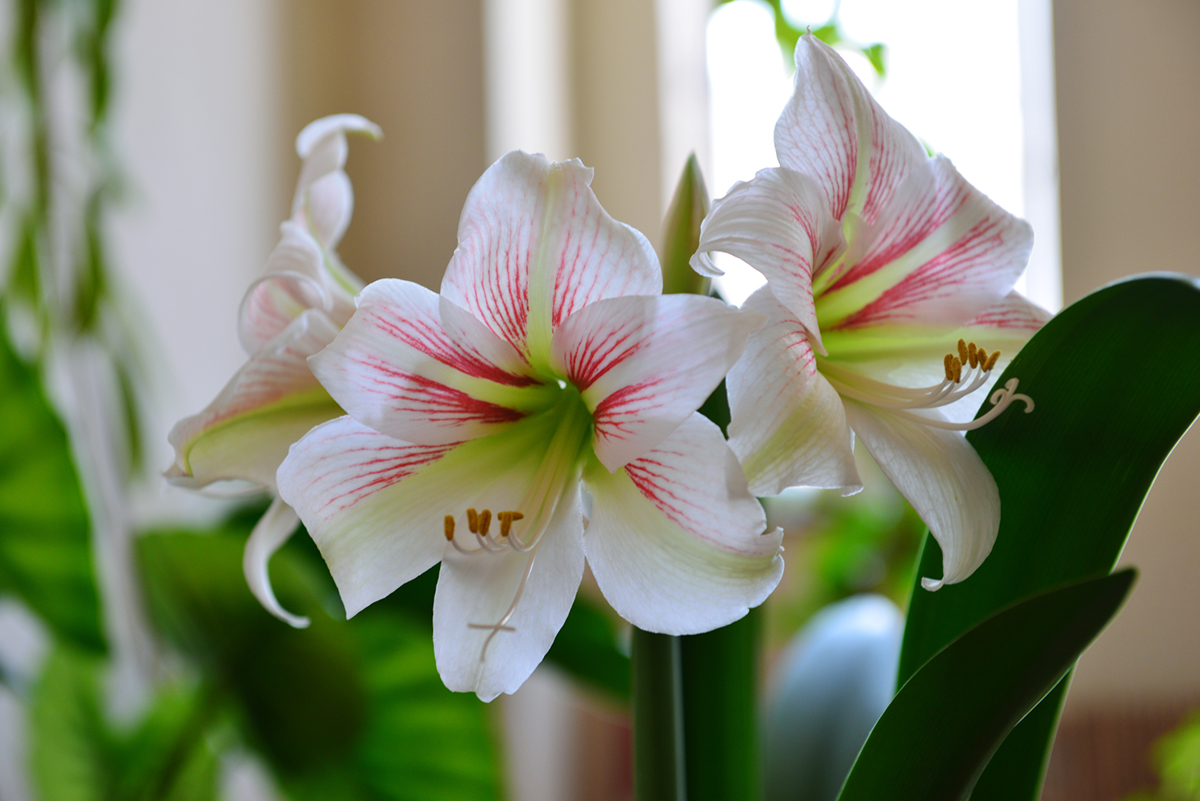Don’t let a silly houseplant add even more stress to your holiday routine.
From now through January, poinsettia, amaryllis, and holiday cacti only ask for three things: the right drainage, sunlight, and moisture.
After the holidays you can either throw them out with the tree and buy new plants next year, or you can follow these tips to get even bigger blooms next time around.
What holiday houseplants want – for the holidays
Drainage: First, take the containers out of their cellophane wrappers, which somehow manage to both trap water and leak, staining whatever sits beneath. To save your plant and your coffee table from excessive water, slip the plastic container or rootball into a real flowerpot with a drainage hole. Place a saucer beneath that to protect your furniture.
Sunlight: Notice that I said ‘sunlight’ rather than ‘artificial light.’ Even bright fluorescent lights often aren’t enough, so place your plant in a room that gets bright indirect light from a nearby window. This means that it should be bright enough to read comfortably with the lights off, but not so bright that you have to squint when looking out the window.
Oddly enough, your houseplant’s shadow offers another clue: The plant should have a blurry shadow. If there is no shadow, it needs more light. If the shadow is crisp, it’s too sunny.
Water: Overwatering is the No.1 killer of houseplants, and they’re especially vulnerable during the colder months. Here’s how to water them without regrets. Keep the houseplant where you can easily monitor its moisture. Before you water, allow the top inch (or fingertip length) of the potting mix to dry out. Then water the potting mix (not the leaves) until it is moist throughout. That’s it!
How to get bigger blooms next year
Up for a minor challenge and a big reward? Keep your poinsettia, amaryllis, and holiday cactus thriving and get bigger blooms each year by following these instructions.
Poinsettia: Poinsettia is probably the trickiest plant on this list to grow indoors year-round, but the payoff is big. After the holidays, prune the stems back hard to about 3 to 4 inches tall. Add slow-release fertilizer according to label instructions and continue watering whenever the top inch of the potting mix dries out. Provide extra humidity during winter by placing it in a brightly lit bathroom or occasionally misting with water.
Your poinsettia might look ragged by spring, but will quickly perk up if placed outdoors in a shady spot after the last frost. Prune again in summer for a bushier plant. To get a colorful display of leaf bracts, provide 14 hours of darkness every day from September through December. You might feel silly, but will be rewarded with a plant that grows bigger and bushier each year.
Holiday cactus: Since holiday cacti are naturally found growing along with orchids in the branches of South America’s rainforests, repot the plants in a 50 percent mixture of orchid mix and potting mix. After the blooms have faded, prune the outermost pads to stimulate growth and bushiness.
Give your holiday cactus a rest period during winter by watering only when the potting mix has dried out completely. Resume regular watering in April, and feed with an orchid fertilizer according to label directions. In September, place the plant in a cool place (between 50 and 70 degrees Fahrenheit) and reduce watering until flower buds form. Then resume normal watering, and fertilize for a flush of flowers that gets bigger each year.
Amaryllis: Amaryllis (Hippeastrum) is very easy to grow and will readily bloom again next December with just a little bit of care. After blooming, cut off the flower stem and continue letting the top inch of potting mix dry out between waterings.

In spring (after the last frost) move it outdoors to a sunny spot, provide fertilizer, closely monitor for slugs, and water regularly. Starting in mid-August, allow the potting mix to dry out completely between waterings. When you see a flower bud about eight weeks later, move the plant to a sunny spot (direct sun is fine) to get a strong and sturdy stem, and resume regular watering. Once the flowers have opened, display your amaryllis with pride.
Related:

